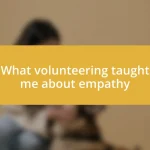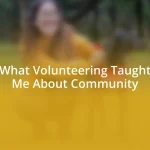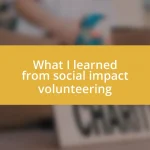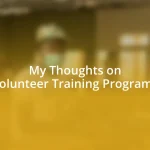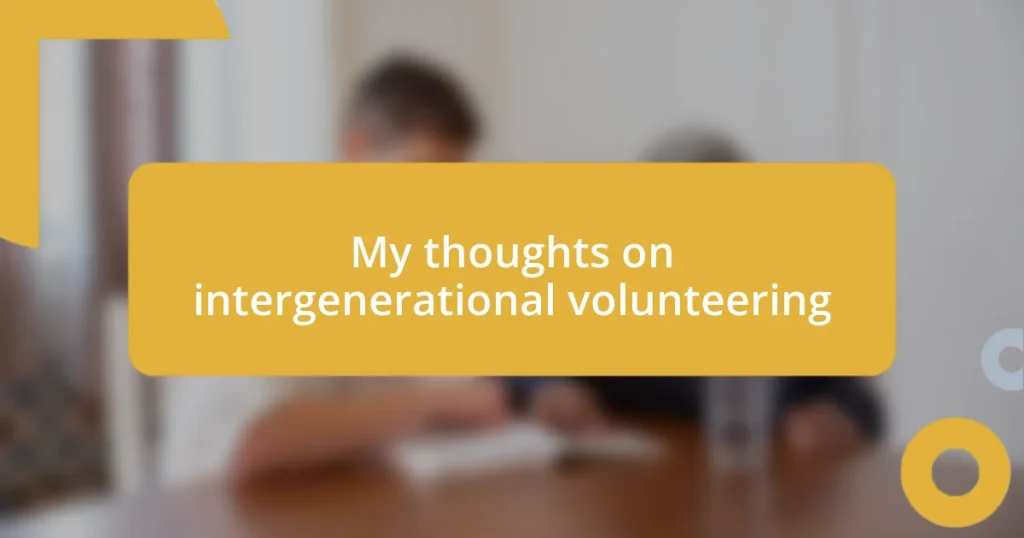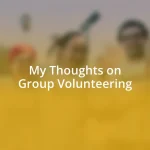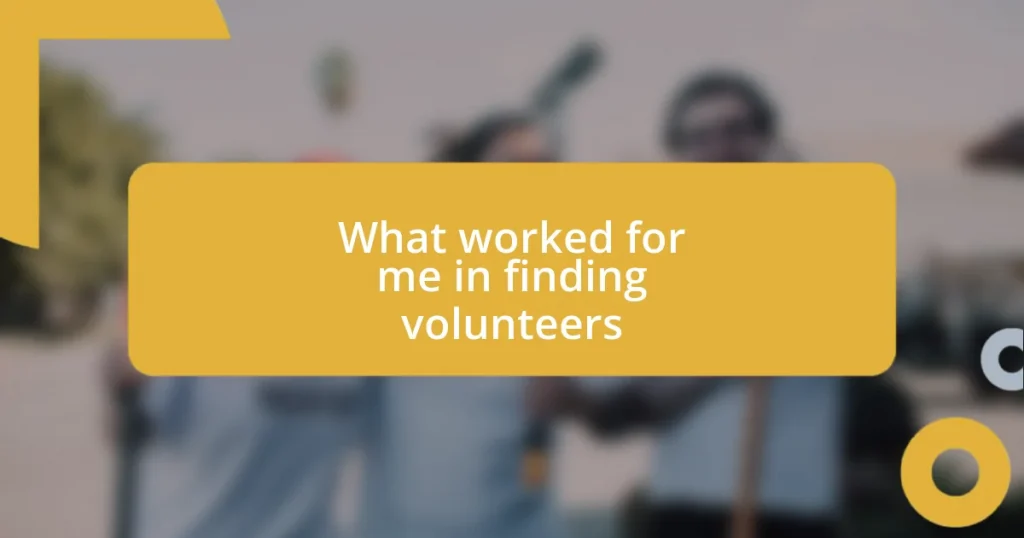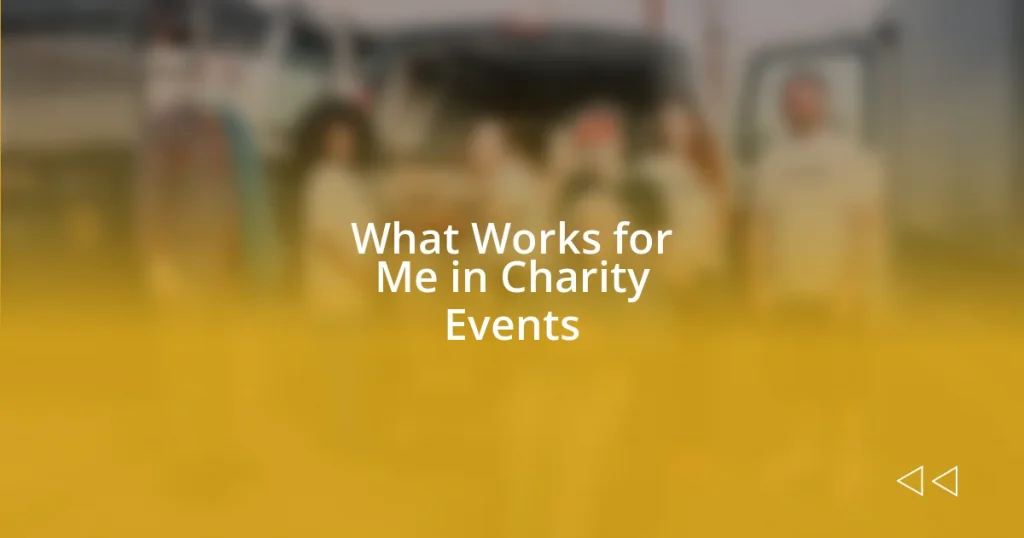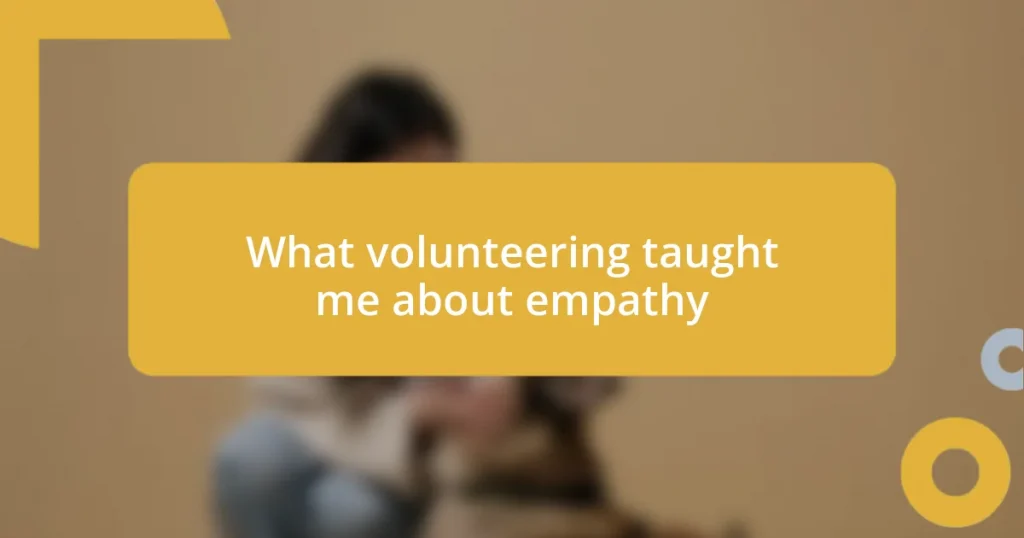Key takeaways:
- Intergenerational volunteering fosters understanding and bridges generational gaps through shared skills and stories, enhancing connections between participants.
- Key benefits include improved social skills, mutual learning, reduced ageism, and strengthened community ties, which enhance the overall well-being of all ages involved.
- Successful program design involves participant input, flexibility to accommodate different abilities, and ongoing evaluation to ensure meaningful contributions and improvements.

Understanding intergenerational volunteering
Intergenerational volunteering is a beautiful blend of age groups coming together to create impactful experiences. The simple act of sharing skills or stories can bridge the generational gap, fostering understanding and mutual respect. I remember volunteering at a community center, where older volunteers taught younger ones how to knit. The laughter and the shared stories transformed our differences into strengths, leaving me with a profound sense of connection.
This form of volunteering isn’t just about giving back; it’s also about learning. When I participated in an intergenerational gardening project, I was surprised by how much wisdom the older participants had to share about patience and resilience. Have you ever tried to grow a plant? It takes time, much like building relationships. Through these interactions, I realized that young and old alike have invaluable lessons to learn from each other.
Ultimately, intergenerational volunteerism reinforces the idea that everyone has something to offer, regardless of age. It struck me when a young teenager helped an elderly woman operate her smartphone — their smiles after solving a technology issue were priceless. Isn’t it fascinating how exchanging knowledge can break barriers and create lasting friendships? This collaboration enriches both the individuals involved and the community as a whole.
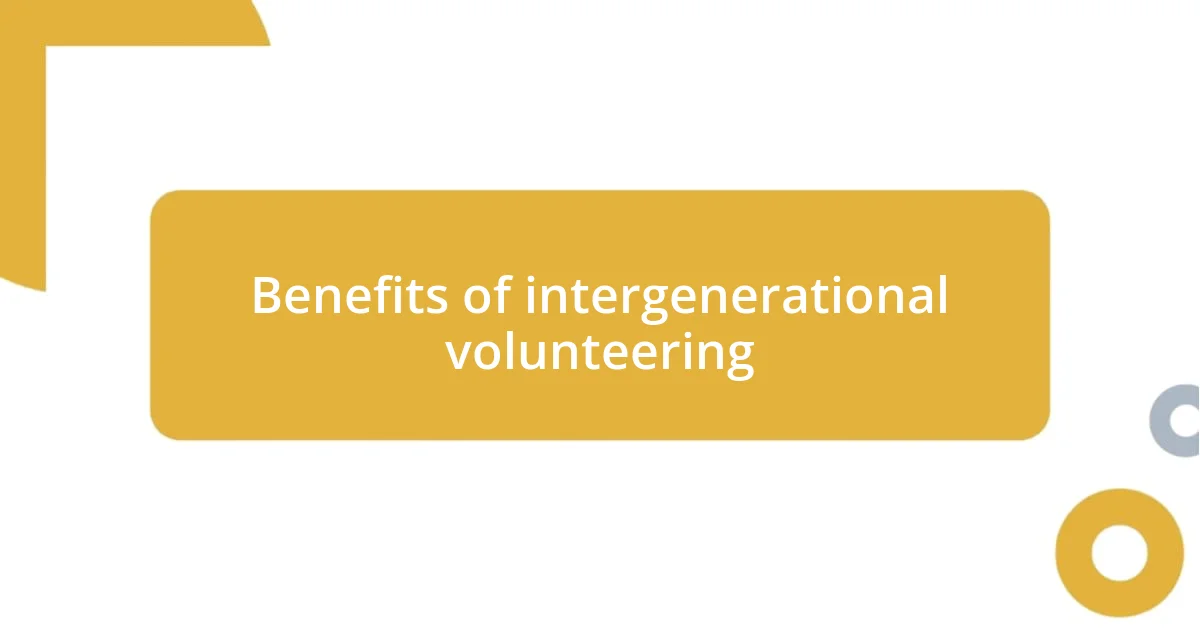
Benefits of intergenerational volunteering
One of the standout benefits of intergenerational volunteering is the sense of community it fosters. I recall a time when I joined a mixed-age group in organizing a local festival. The different perspectives brought about creative ideas, blending youthful energy with seasoned experience. It was stunning to witness how our collaboration transformed not just the event but also our feelings of belonging within the community.
Here are some benefits that I’ve observed:
– Enhanced social skills: Engaging with individuals from different age groups improves communication and interpersonal skills.
– Mutual learning: Each generation imparts unique knowledge, whether it’s life lessons or modern technology tips.
– Reduced ageism: Spending time together helps break down stereotypes and bridges the generation divide.
– Boosted mental well-being: Volunteering tends to increase happiness and reduce feelings of isolation, benefiting all ages involved.
– Strengthened community ties: Collaborative projects create a stronger sense of unity and shared purpose among participants.
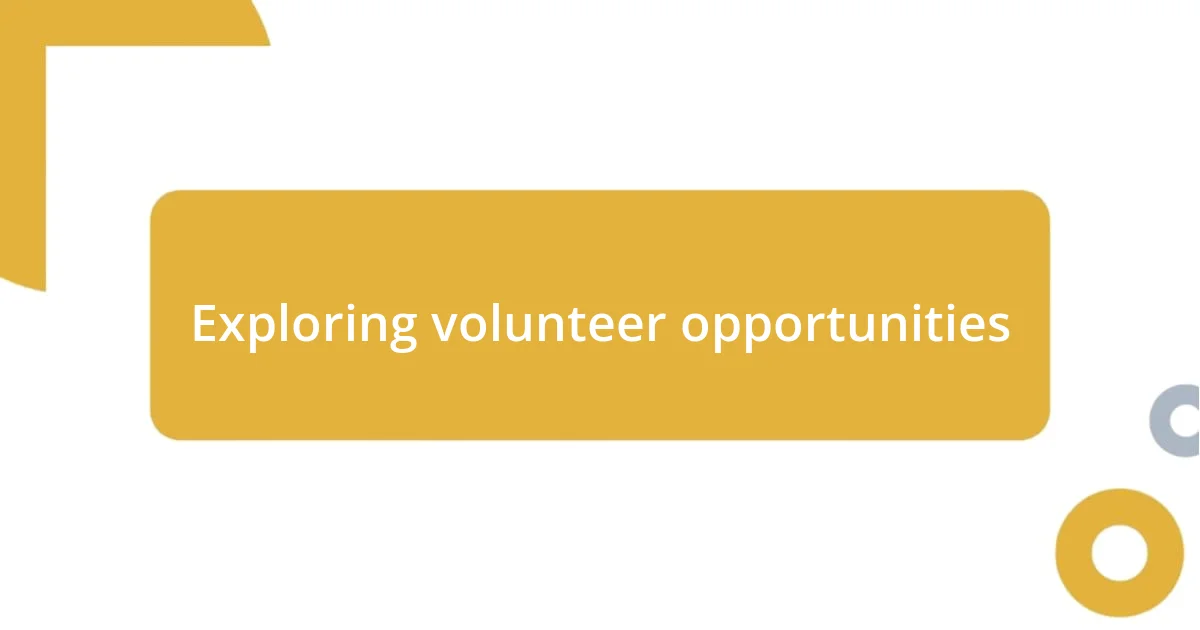
Exploring volunteer opportunities
Exploring volunteer opportunities in an intergenerational context can be incredibly rewarding. From what I’ve seen, community centers and local nonprofits often offer great programs aimed at bringing different age groups together. I remember discovering an arts initiative where seniors and children would collaborate on mural projects. Watching their creativity unfold together was heartwarming; it was clear that both groups took joy from expressing themselves and learning from one another in the process.
Another interesting option I’ve come across is tutoring and mentorship programs. These allow older volunteers to share their expertise with younger generations on subjects like music or history. I took part in a mentorship program once, and the boost in the students’ confidence as they grasped new concepts was palpable. It was a reminder that age truly doesn’t dictate the value one can provide; every interaction can leave a significant impact.
I also find that intergenerational volunteering often involves service projects like community clean-ups or holiday events. The blending of experiences, by having both youth and elders working side by side, truly fosters a sense of unity. Participating in one such event, I felt the collective spirit resonating among everyone involved. It’s an inspiring reminder of how we can unite for a common cause.
| Type of Opportunity | Description |
|---|---|
| Community Arts Programs | Collaboration between seniors and youth on creative projects such as murals, fostering expression and teamwork. |
| Tutoring and Mentorship | Older individuals share their expertise in subjects like music or history, enhancing the confidence of younger participants. |
| Service Projects | Events like community clean-ups that bring together different generations to work toward a shared goal, building unity and camaraderie. |
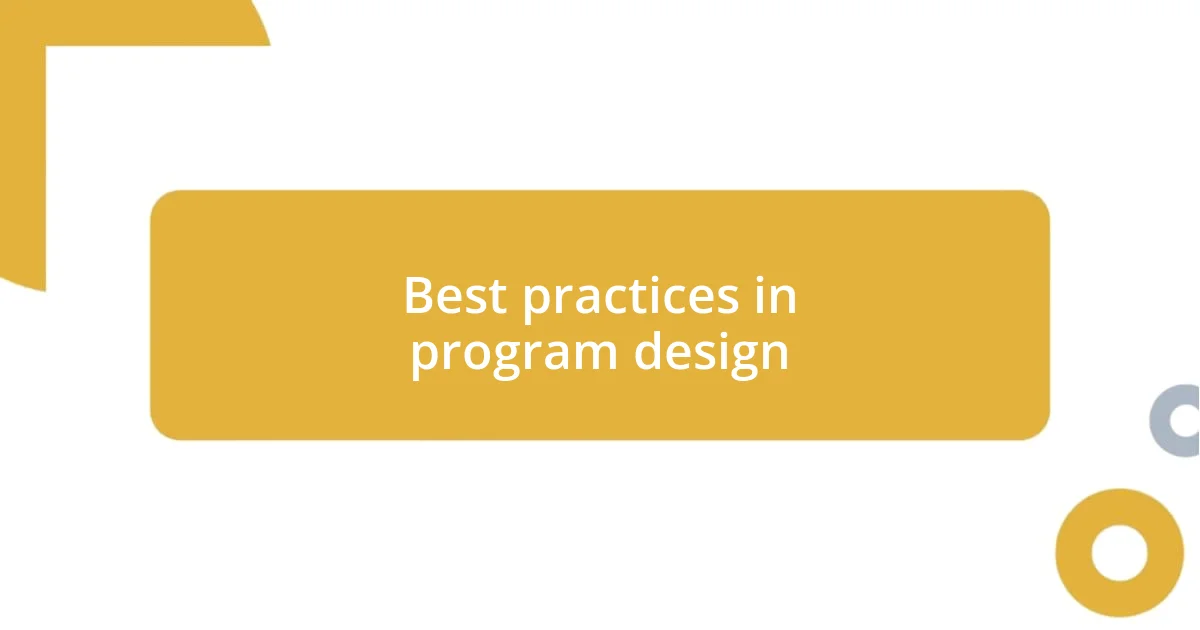
Best practices in program design
Designing an intergenerational volunteering program requires a thoughtful approach to ensure it meets the needs of all participants. I recall a successful program where we involved volunteers in the planning stage. Their input was invaluable, and it fostered a sense of ownership and connection to the project. When participants feel their voices matter, it transforms not just the program but also the relationships formed within it.
Another key aspect is creating a flexible environment that accommodates varying abilities and interests. During a gardening project I participated in, we had tasks suited for every age and ability level. It was touching to see teenagers and seniors working together, and it sparked conversations about gardening techniques. How often do we underestimate the power of shared interests to bridge generation gaps? The right design enables collaboration and ensures that everyone feels they contribute meaningfully.
Lastly, evaluation and feedback mechanisms are crucial for continuous improvement. I remember after one volunteering event, we gathered feedback from all age groups, which led to valuable insights on how to enhance future projects. Engaging in an open dialogue about experiences creates an atmosphere of trust and helps refine practices that respect both the youth and elderly perspectives. This way, we can create programs that not only meet expectations but exceed them.
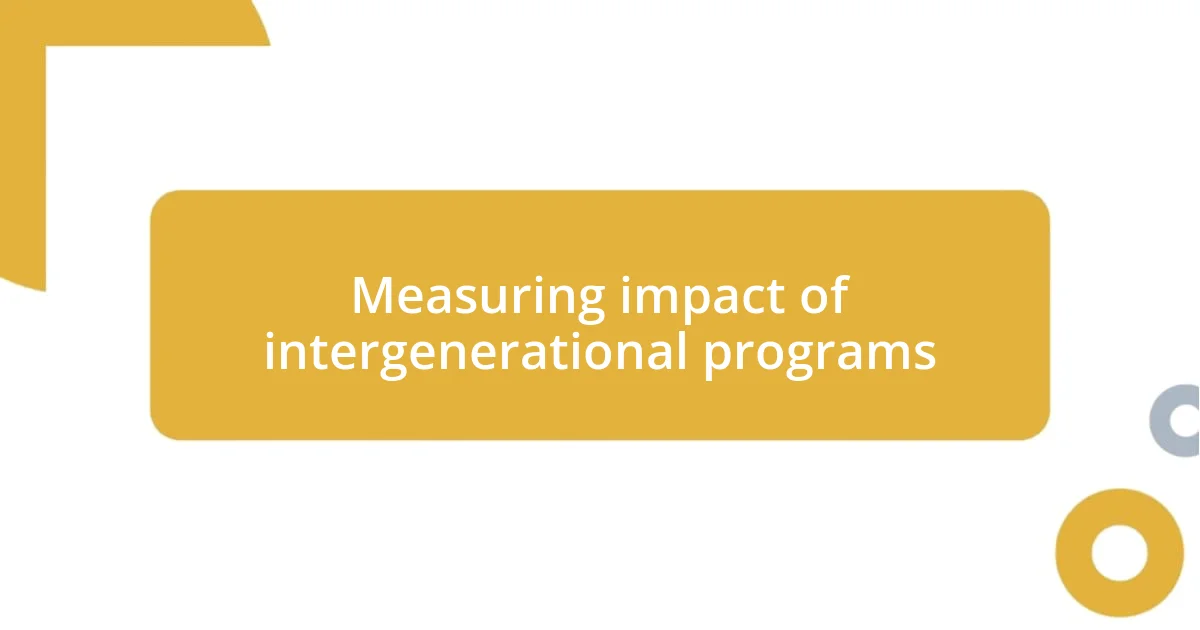
Measuring impact of intergenerational programs
Measuring the impact of intergenerational programs can often feel like navigating a complex maze. Take, for instance, a community storytelling project I participated in, where participants recorded their experiences together. The real magic happened when we analyzed the program’s outcomes; not only did we see improved communication skills among the younger volunteers, but the older participants shared their joys in reflecting on their lives. Isn’t it fascinating how measurable outcomes can reveal deeper emotional connections?
To gauge impact effectively, we need to focus on both qualitative and quantitative metrics. I remember attending a workshop where we discussed using surveys and interviews to capture participants’ feelings and insights. While the numbers paint a broad picture of engagement levels, the heartfelt stories shared in those interviews often offer a richness that statistics alone can never convey. Have you ever considered how powerful personal narratives can be in assessing program success?
Consistency in evaluation is key. In a program evaluating intergenerational gardening, we set periodic check-ins to assess progress and collect feedback. By actively engaging with participants after each season, we discovered the tremendous impact those plants had on their emotional well-being. What I found truly enlightening was how our approach fostered an ongoing dialogue, helping us continuously adapt and improve the initiative. It begged the question: how often do we overlook the potential for growth through reflection?
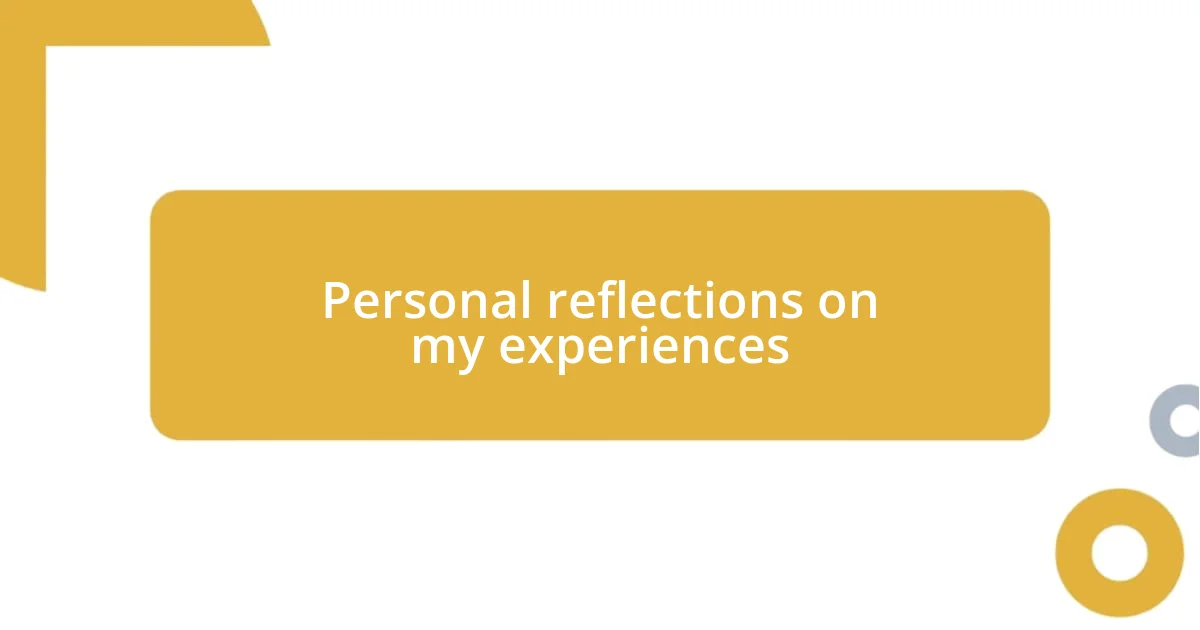
Personal reflections on my experiences
Volunteering across generations has been a transformative experience for me. I once took part in a senior care home project where I shared my passion for music with the residents. Their eyes lit up as we played familiar songs together, reminding me of how powerful shared nostalgia can be in building connections. Did you ever think about how music transcends age barriers? That day, I realized that through something as simple as a song, we can weave together the fabric of different life stories.
One particular experience stands out in my mind. During a collaborative art project, I worked alongside a 90-year-old veteran named Frank. As we painted side by side, he shared vivid stories from his youth—tales of friendship, bravery, and love that sparked a fire of creativity in both of us. It made me reflect on how sharing experiences can inspire not just the individual but the entire group. Have you ever noticed how one story can echo through a room, connecting hearts across ages?
What struck me most was the lasting impact of these interactions. After volunteering, I often find myself thinking about Frank and those moments we shared. It’s incredible how these seemingly simple volunteer opportunities can fill me with joy and perspective long after they end. They remind me that, regardless of age, we all have wisdom to offer each other. Isn’t it fascinating how these bonds can reshape our understanding of community?


